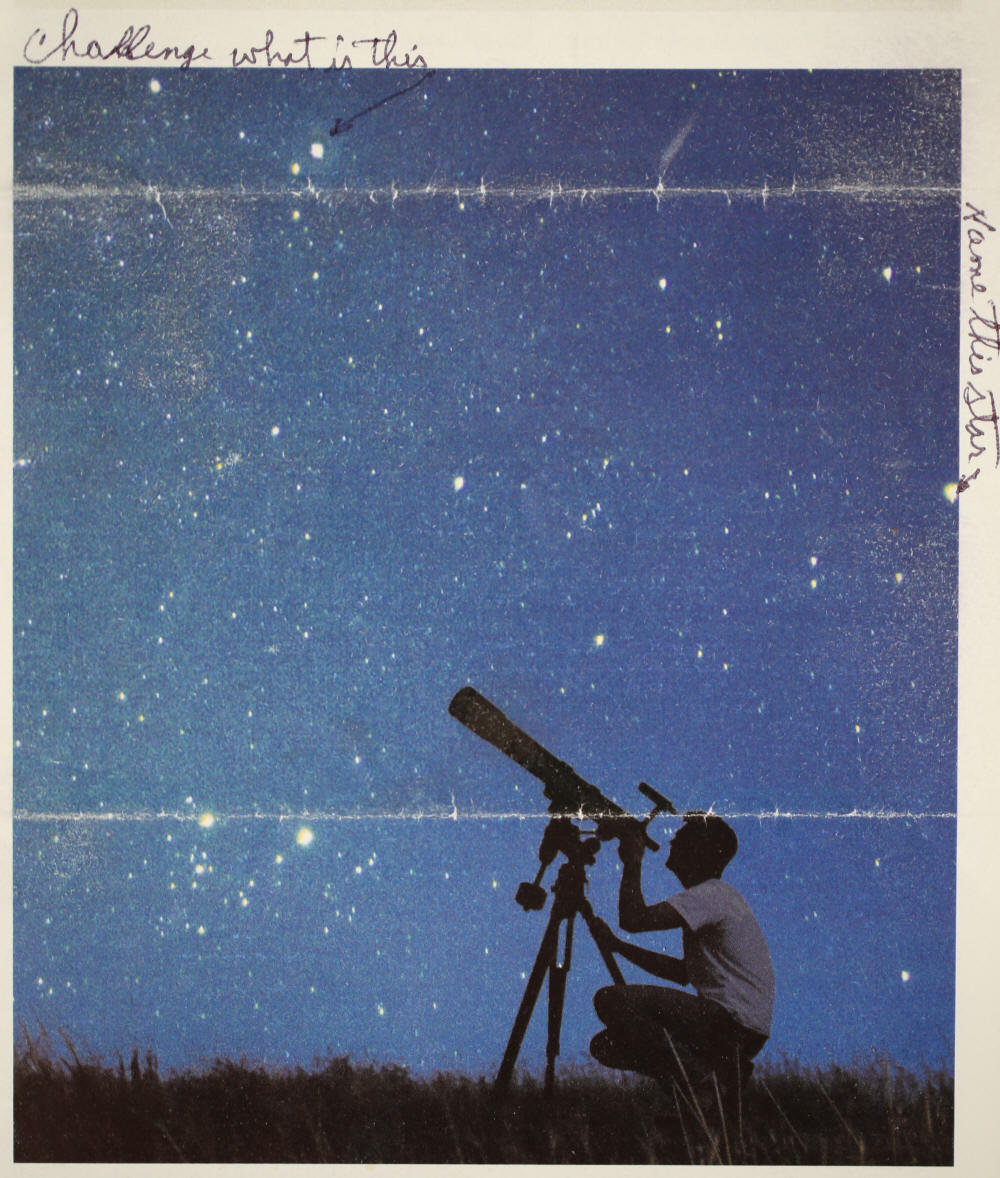
Mystery Objects in The Great Courses Ad
At the June 1, 2018,
meeting of the West
Jersey Astronomical Society, Alan Daroff showed a picture scanned
from a recent mailing sent out by The Great Courses. In
particular, it was for an astronomy course and showed a young man
with a telescope in the foreground, and a starry sky in the
background with the Hyades star cluster in
Taurus extending up towards the foot of Castor in
Gemini, which is also the terminus of the club in Orion's raised
right arm in some stick figures. Here's a digital image I took of this
paper picture; the two prominent, jagged white lines across the
picture are creases in the paper (mouseover for labels)...
The course's web page shows a cropped version of the picture. The Hyades are in the bottom-left quadrant of the picture, but the top of the paper picture from the mailing, showing the foot of Castor, is absent. Alan pointed out a bright object at the Hyades and another at Castor's foot, neither of which seemed to belong to the starry sky, so they must be planets, but that raised the question — what planets and when were they there?
After returning home that evening, I opened up a SkyTools chart for the region from the Hyades up to Castor's foot, and started to look, initially using brute force by clicking the date back several years at a time while looking near Ain (Epsilon Tauri) at the northern tip of the open end of the "V" representing the Bull's face, opposite Aldebaran (Alpha Tauri) on the southern tip. Saturn approached Ain on the south side of the ecliptic and settled into the respective spot in the image on the evening of March 17, 2002 (using a location of 40°N-75°W, nominally Philadelphia). Many other planets passed this spot during the incremental time search (going back as far as 1970), but none fell in place like Saturn on that date. Furthermore, Jupiter was now in the appropriate spot in Castor's foot, near Mu Geminorum, about 4° east of M35. At the time, Saturn was at -1.5° ecliptic latitude while Jupiter was at +9 arc minutes ecliptic latitude. By the way, if you haven't already identified the bright star at the right edge of the picture, it's Capella in the constellation Auriga.
(4) Vesta was half a degree below Saturn as shown in the SkyTools clip below, and if it could be identified in the picture, would lock down the circumstances. Alas, neither the paper picture nor the web picture are clear enough for a solid identification of it.
In order to get the ecliptic nearly vertical (perpendicular to the horizon) to match the picture, I changed the location to Cartagena, Columbia, which is at 10°N latitude and 75.5°W longitude (essentially the same longitude as my nominal Philadelphia location, but 30° closer to the equator). The image below is a capture of the SkyTools screen set for Cartagena at 10:30 pm standard time (UT-5) on March 17, 2002. The ecliptic is the blue, nearly-vertical line.
Alan Daroff noticed that the label generated by SkyTools for the nebula below Orion's club, NGC "5458" is a wrong number. It is out of sequence for that region of the sky. As it turns out, that number is actually an HII region of the galaxy M101 in Ursa Major. When the nebula in question is clicked on a live SkyTools chart (not this static screen clip), the resultant information box indicates NGC 2175. Looks like a little software bug.
About one month later, on April 23, 2002, Jerry Lodriguss captured,
on film, an
image of five planets in the west after sunset, which included
Saturn and Jupiter at roughly the same spacing, but each a little
farther east (up) relative to the Great Courses picture.
Jerry's image was the
Astronomy Picture of the Day for April 29, 2002.
Last Update: Saturday, June 16, 2018 at 01:22 PM Eastern Time